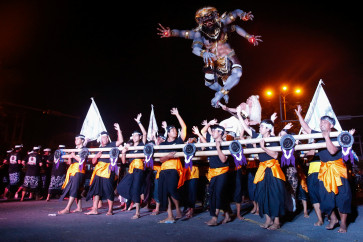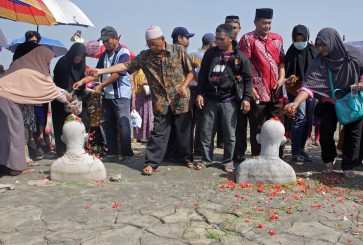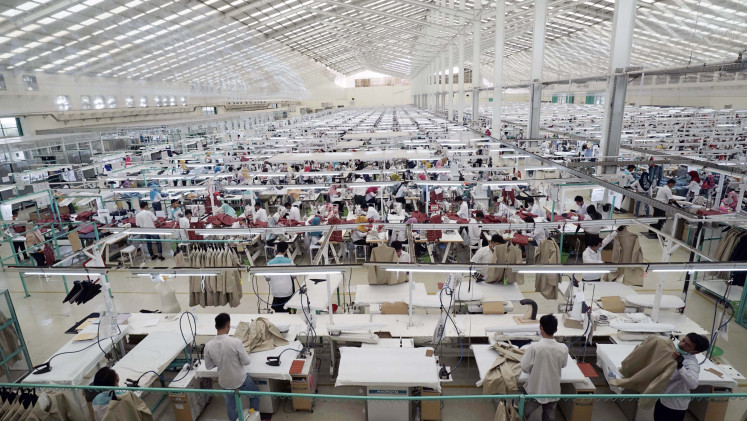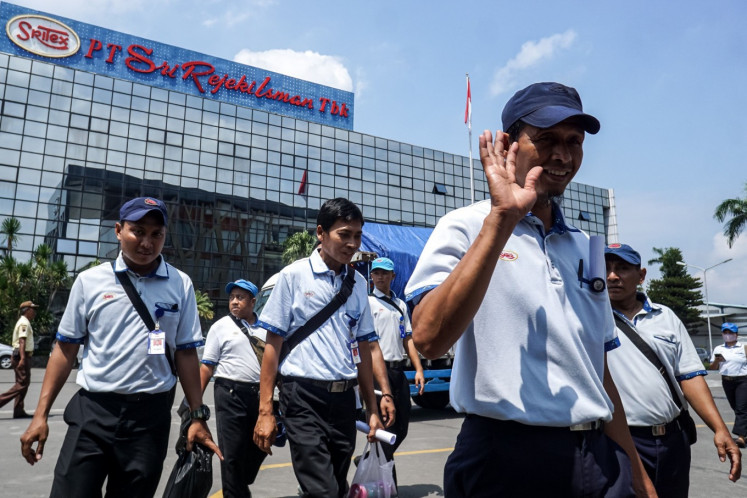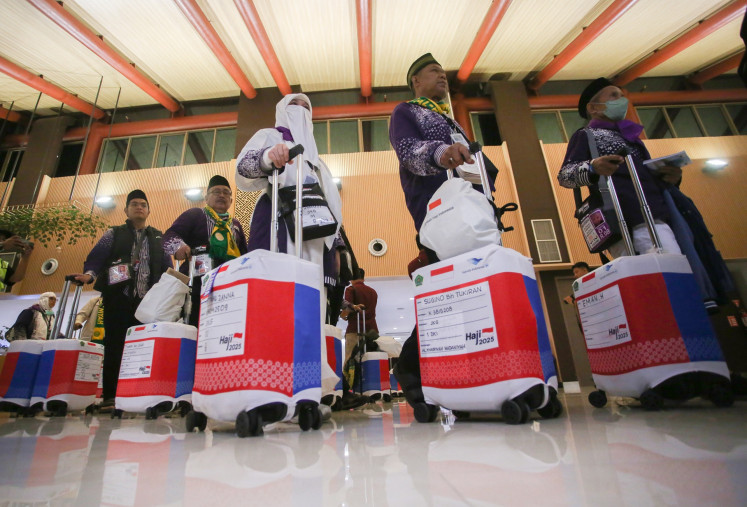More than just coconuts
Mixed use: Australian contemporary artist Nicholas Mangan speaks with Laplapan villager Wayan Subawa about coconut oil harvest processes
Change text size
Gift Premium Articles
to Anyone

M
span class="caption" style="width: 558px;">Mixed use: Australian contemporary artist Nicholas Mangan speaks with Laplapan villager Wayan Subawa about coconut oil harvest processes.
Now in his late 80s, farmer Wayan Gologan of Laplapan village in Gianyar still climbs coconut palms to harvest the coconut oil his village is famous for.
Almost toothless with age, Wayan is still fit, his hands over the decades growing strong and elongated, his feet and legs roped with muscle. This man is the oracle of coconut palms, according to his neighbor Wayan Subawa, who translates for Wayan the elder from Balinese.
“Since he was a small boy Kakek Wayan has worked his farm of rice and coconuts. He still climbs with his feet and hands. We don’t cut steps in the palms like they do in Java. He does use a rope around his ankles these days to help him climb, but in the past it was just up the tree with his hands and feet,” says Subawa.
Laplapan village is 600 meters above sea level on the outskirts of Ubud; its geographical location is perfect for rice and coconut production.
To the people of Laplapan, the coconut is a “magic gift”, offering medicine, heat and light.
“When the power goes off here we light coconut oil lamps, these are known as penyembean. This is a really important ancient word that many young Balinese have never heard,” says Subawa.
Coconut oil is also the fuel of a new sculptural and video installation currently being created by contemporary artist Nicholas Mangan, who visited Laplapan village to learn more about traditional methods of coconut oil harvest. Mangan, who hails from Australia, is currently creating a sculpture and film for his Ph.D. work based on the importance of coconut oil in the Bougainville Civil War that erupted in Papua New Guinea around 1990.
“The civil war broke out over land disputes following the Rio Tinto copper mine development in Bougainville. This was the largest copper mine in the world and the local people didn’t want it. They laid damage claims, but that compensation was never met so they became more physically active creating roadblocks and shutting down power plants to the mine,” says Mangan of a war that would drive the Bougainville people and their Bougainville Revolutionary Army into exile on their island.
At war with the mining company and the PNG government, the people were cut off from medicine, food and fuel, says Mangan.
“One of the things they did was to use coconut oil to fuel their engines and generators, so the film I have edited together from ABC [Australian Broadcasting Corporation] news footage and Rio Tinto advertorials shows the flows and stagnations of materials; the mine built for the products of capitalism and the coconut was used as a way of resistance and revolt,” says Mangan of the artwork he is currently creating in his Melbourne studio.
He has built a modified generator that runs on the coconut oil he harvests in his studio from Queensland coconuts. The coconut oil-fired generator runs the projector of the film of the coconut oil’s key role in the resistance of the Bougainville people.
“It is a beautiful circle and that is why it is all about the flows — the material, the coconut oil, tells the story symbolically and physically,” says Mangan, adding that coconut oil becomes an “autonomous source of power so the projector can be played anywhere that has coconuts, which relates to the idea of being in the world with materials available,”
This notion of an “autonomous source of power” cycles back to the village of Laplapan where every villager has access to their own heat, light, cooking oil and, if needed, generator fuel without recourse to industry.
Mangan’s work highlights this traditional knowledge that offers independence from the mainstream, reminiscent of the David and Goliath struggle of the people of Bougainville who with coconut oil fuel and homemade weapons defeated PNG forces backed with Australian Iroquois helicopters, and the financially powerful mining giant Rio Tinto.
— Photos courtesy of Nicholas Mangan and Ying-Lan Dann

